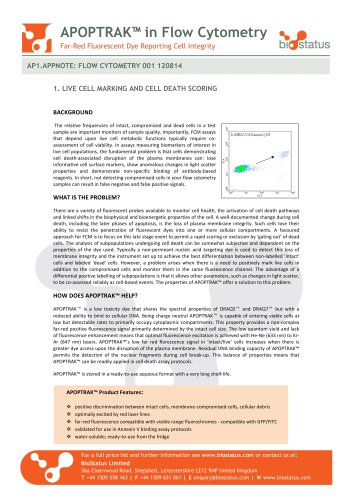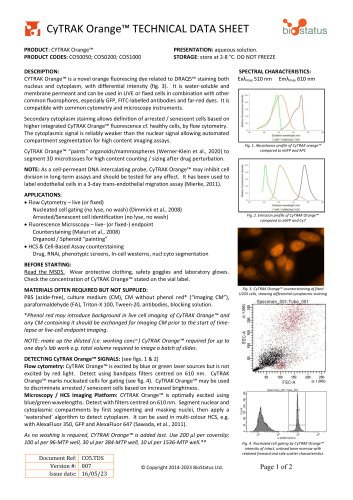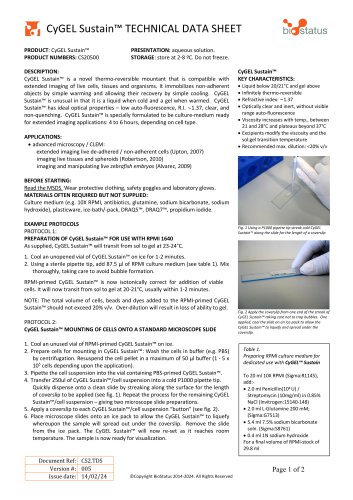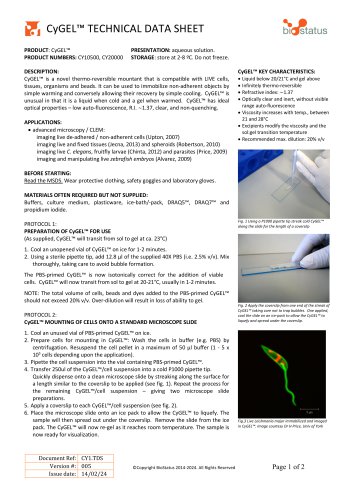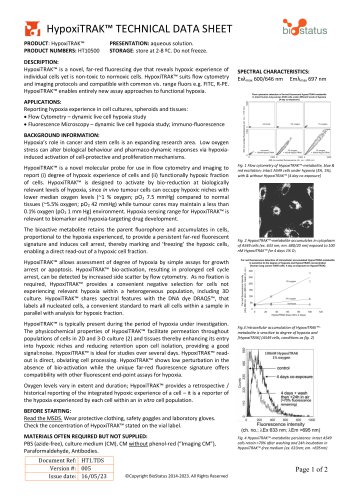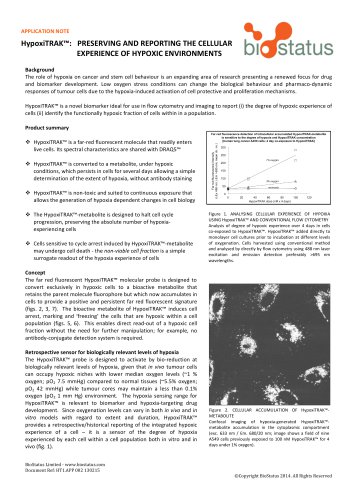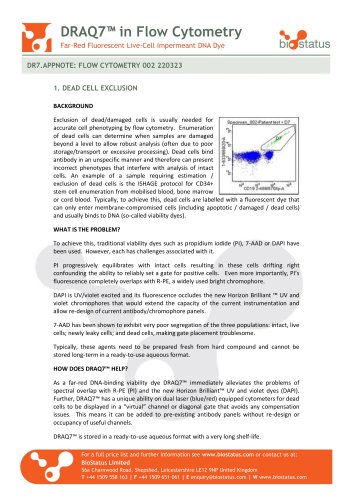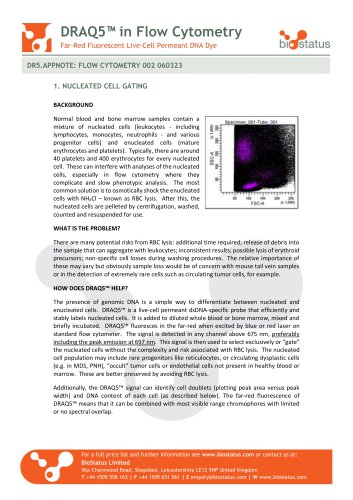
Catalog excerpts
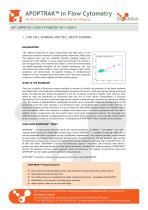
APOPTRAK™ in Flow Cytometry Far-Red Fluorescent Dye Reporting Cell Integrity AP1.APPNOTE: FLOW CYTOMETRY 001 120814 1. LIVE CELL MARKING AND CELL DEATH SCORING BACKGROUND The relative frequencies of intact, compromised and dead cells in a test sample are important monitors of sample quality. Importantly, FCM assays that depend upon live cell metabolic functions typically require co-‐ assessment of cell viability. In assays measuring biomarkers of interest in live cell populations, the fundamental problem is that cells demonstrating cell death-‐associated disruption of the plasma membranes can: lose informative cell surface markers, show anomalous changes in light scatter properties and demonstrate non-‐specific binding of antibody-‐based reagents. In short, not detecting compromised cells in your flow cytometry samples can result in false negative and false positive signals. WHAT IS THE PROBLEM? There are a variety of fluorescent probes available to monitor cell health, the activation of cell death pathways and linked shifts in the biophysical and bioenergetic properties of the cell. A well-‐documented change during cell death, including the later phases of apoptosis, is the loss of plasma membrane integrity. Such cells lose their ability to resist the penetration of fluorescent dyes into one or more cellular compartments. A favoured approach for FCM is to focus on this late stage event to permit a rapid scoring or exclusion by ‘gating out’ of dead cells. The analysis of subpopulations undergoing cell death can be somewhat subjective and dependent on the properties of the dye used. Typically a non-‐permeant nucleic acid targeting dye is used to detect this loss of membrane integrity and the instrument set up to achieve the best differentiation between non-‐labelled ‘intact’ cells and labeled ‘dead’ cells. However, a problem arises when there is a need to positively mark live cells in addition to the compromised cells and monitor them in the same fluorescence channel. The advantage of a differential positive labelling of subpopulations is that it allows other parameters, such as changes in light scatter, to be co-‐assessed reliably as cell-‐based events. The properties of APOPTRAK™ offer a solution to this problem. HOW DOES APOPTRAK™ HELP? APOPTRAK™ is a low toxicity dye that shares the spectral properties of DRAQ5™ and DRAQ7™ but with a reduced ability to bind to cellular DNA. Being charge neutral APOPTRAK™ is capable of entering viable cells at low but detectable rates to primarily occupy cytoplasmic compartments. This property provides a non-‐complex far-‐red positive fluorescence signal primarily determined by the intact cell size. The low quantum yield and lack of fluorescence enhancement means that optimal fluorescence excitation is achieved with He-‐Ne (633 nm) to Kr-‐ Ar (647 nm) lasers. APOPTRAK™’s low far red florescence signal in ‘intact/live’ cells increases when there is greater dye access upon the disruption of the plasma membrane. Residual DNA binding capacity of APOPTRAK™ permits the detection of the nuclear fragments during cell break-‐up. This balance of properties means that APOPTRAK™ can be readily applied in cell death assay protocols. APOPTRAK™ is stored in a ready-‐to-‐use aqueous format with a very long shelf-‐life. APOPTRAK™ Product Features: v v v v v positive discrimination between intact cells, membrane-‐compromised cells, cellular debris optimally
Open the catalog to page 1All BioStatus catalogs and technical brochures
-
CyGEL™ TECHNICAL DATA SHEET
2 Pages
-
DRAQ9™ TECHNICAL DATA SHEET
2 Pages
-
DRAQ7™ in Flow Cytometry
2 Pages
-
DRAQ5™ in Flow Cytometry
2 Pages

